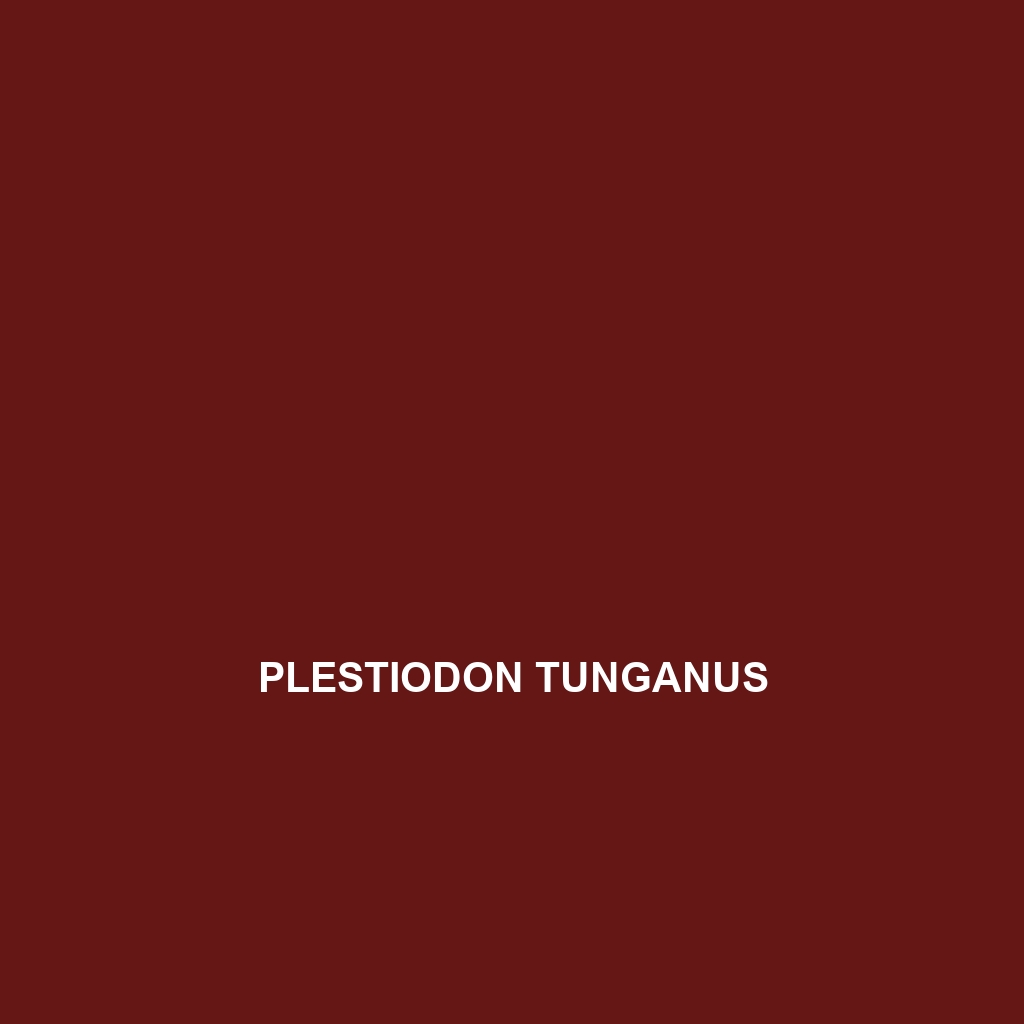Common Name
Plestiodon tunganus
Scientific Name
Plestiodon tunganus
Habitat
Plestiodon tunganus, commonly known as Tungan skink, primarily inhabits diverse geographic regions, which include temperate forests and savannas. This species thrives in warm, moist environments that boast rich vegetation. Tungan skinks are typically found in areas with adequate shelter from predators, such as leaf litter, logs, and burrows. The climate in which they thrive ranges from subtropical to tropical, making them adaptable but often reliant on humid conditions to maintain their physiological balance. Interestingly, their habitat often overlaps with rainforests and other densely vegetated regions, where they can find both food sources and protection.
Physical Characteristics
Plestiodon tunganus exhibits several distinctive physical characteristics. Typically, adults reach lengths of about 20-25 centimeters, depending on their environment and availability of resources. Their bodies are elongated and smooth, featuring a streamlined shape that facilitates quick movement through vegetation. Coloration can vary but often displays a base of dark brown or gray with lighter stripes running down the length of the body. Unique features include their prominent, elongated limbs and a distinctive triangular head, which aids in burrowing and foraging. These skinks are also known for their agile tails, which can sometimes be shed as a defense mechanism.
Behavior
The behavior of Plestiodon tunganus is varied and fascinating. These skinks are primarily diurnal, with activity peaking during warm, sunny days when they forage for food and bask in the sunlight to regulate their body temperature. They often display social interaction through territoriality, defending their habitats from intruding skinks. During the mating season, which usually occurs in late spring, males are known to engage in elaborate courtship displays, showcasing their vibrant colors to attract females. While they remain mostly grounded, these skinks are excellent climbers, often seen scaling low branches or rocky outcrops in search of food.
Diet
Plestiodon tunganus is primarily classified as an insectivore. Their diet consists mainly of various insects, including beetles, ants, and spiders. Occasionally, they may consume other small invertebrates. The skinks demonstrate opportunistic feeding behavior, meaning they will take advantage of available food sources, which may include plant matter in cases of scarcity. Such a diet not only fulfills their nutritional needs but also plays a role in controlling insect populations within their habitats.
Reproduction
The reproductive cycle of Plestiodon tunganus is intriguing. Mating typically occurs in the spring months, following the skink’s emergence from hibernation. The gestation period lasts approximately 2-3 months, after which the female lays a clutch of eggs, usually consisting of 5-10 eggs, in a sheltered location like under rocks or decaying leaves. The young are fully formed upon hatching and are independent from birth. Parental investment is minimal; however, the strategic choice of nesting sites enhances offspring survival by providing necessary moisture and protection from predators.
Conservation Status
Currently, the conservation status of Plestiodon tunganus is classified as “Least Concern” by the IUCN Red List. Although not facing immediate threats, these skinks are affected by habitat destruction due to urban expansion and climate change. Conservation efforts are crucial for maintaining their habitats, particularly in regions where deforestation and land conversion are prevalent. Maintaining forest corridors is essential for ensuring genetic diversity and enabling the Tungan skinks to adapt to changing environmental conditions.
Interesting Facts
One of the most unusual facts about the Plestiodon tunganus is its ability to change its color slightly in response to environmental factors, which aids in thermoregulation and camouflaging against predators. Additionally, these skinks have been observed engaging in unique basking behaviors, such as forming small groups on sunny rocks to optimize their exposure to sunlight. This communal basking not only helps in temperature regulation but may also reduce the overall risk of predation.
Role in Ecosystem
Plestiodon tunganus plays an essential role in its ecosystem as both a predator and prey species. As insectivores, they contribute to maintaining the health of their environment by controlling insect populations, which can otherwise reach harmful levels. Additionally, they serve as a food source for various predators, including birds and mammals. Their presence signifies a healthy, balanced ecosystem where the interaction of species supports biodiversity. As such, conservation of Plestiodon tunganus not only benefits the species itself but also ensures the stability of its habitat.
